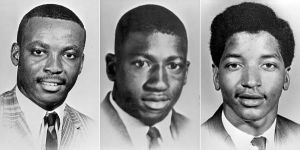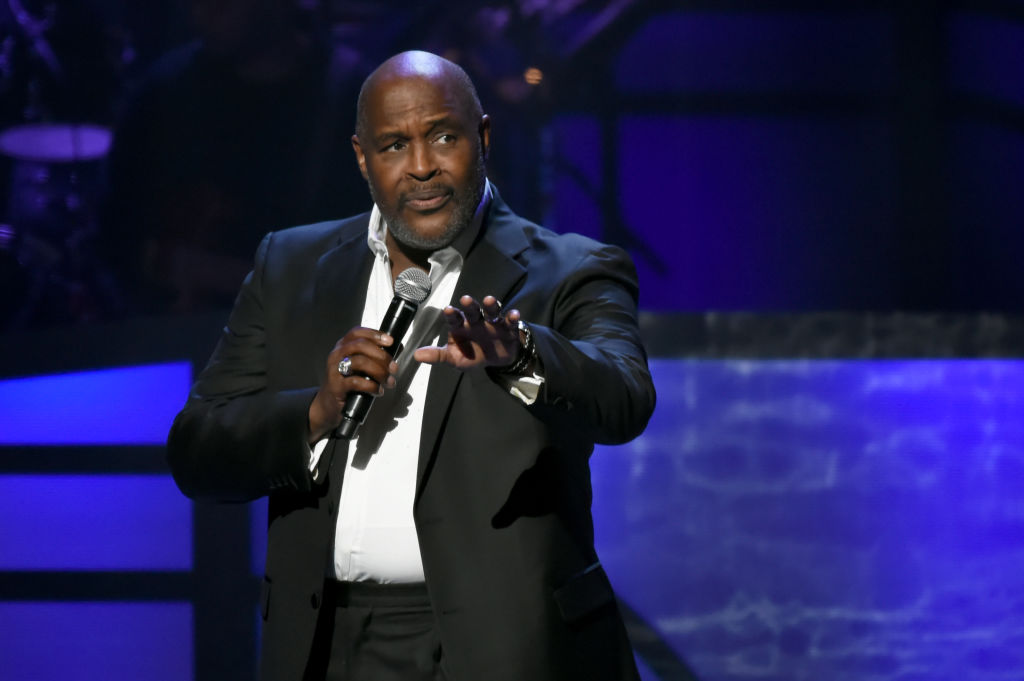‘Orangeburg Massacre’ In South Carolina Occurred On This Day In 1968

Source: File / South Carolina State University
UPDATED: 12:41 p.m. ET, Feb. 8, 2021 —
One of the most stirring tragedies of the civil rights movement during the 1960s took place in the small town of Orangeburg in South Carolina. On this day in 1968, police officers fired in to a crowd of Black students protesting segregation, killing three and wounding 28 others, in what has been called the “Orangeburg Massacre.”
After Black students were denied entry to the Whites-only All Star Bowling Lane alley and began protesting at the establishment’s door, the students — now numbering into the hundreds — gathered on the campus of South Carolina State University to demonstrate against the bowling alley. The students were raucous and sparked a bonfire, with the group throwing firebombs and other objects. As an officer put out a fire, he was hit with an unknown object. Police claimed to hear gunfire and began to fire in to the throng.
The police killed three people that day: Samuel Hammond and Henry Smith, both students at SCSU, and Delano Middleton (all pictured above), a student at nearby Wilkinson High School. 28 others were injured by both gunfire and other weapons, including one pregnant young woman who reported having a miscarriage a week later due to beatings by police.
Robert E. McNair, the governor at the time, held a press conference the next day and blamed the police killings on outside Black militants and off-campus protests contrary to what was originally reported.
Noted activist and former National Director of the Student Nonviolent Coordinating Committee (SNCC) Cleveland Sellers (pictured at right) was arrested and tried on charges not related to the event and for actions at the All Star bowling alley. Sellers served seven months and was officially pardoned by the state more than two decades later.
Today at SCSU, the school’s gymnasium is named for the three young men killed that day. As expected, the incident received very little national media coverage, overshadowed by the deaths of white anti-war protesters at Kent State University. As a result, justice was delayed and most certainly imbalanced.
Sellers would later graduate from Harvard in 1970 before earning a doctorate at the University of North Carolina in education. His son, Bakari Sellers, would go on to win a seat in the state legislature and is a noted CNN political analyst.
To this date no one has been held accountable for the deaths of Hammond, Smith and Middleton. In 2003 former Governor Mark Sanford offered a written apology for the massacre. Last year, McNair broke his silence regarding the massacre and took responsibility in a book written by Philip Grose titled, “South Carolina at the Brink: Robert McNair and the Politics of Civil Rights.”
On Monday civil rights attorney Justin Bamberg hosted the annual commemoration discussion centered around the importance of honoring the legacies of those whose lives were tragically taken.
“We can commemorate them with monuments, but we can also team up and commemorate them with movements,” Bamberg said.
South Carolina State University President President James Clark reinforced the importance of the the E-Race Center of Excellence and Justice, which stands for Eradicating Racism and Constructing Equity. The E-RACE Center was announced on Feb. 3 at the top of Black History Month.
The center will reside on campus and is formed through a collaborative initiative between university faculty, staff and experts, who will work to address systemic racism through training, advocacy and service.
“It is time to do more of the movement to go along with the monuments,” said Clark.
Watch this video on the Orangeburg Massacre here:
SEE ALSO:
Deborah Archer Becomes American Civil Liberties Union’s First Black President












